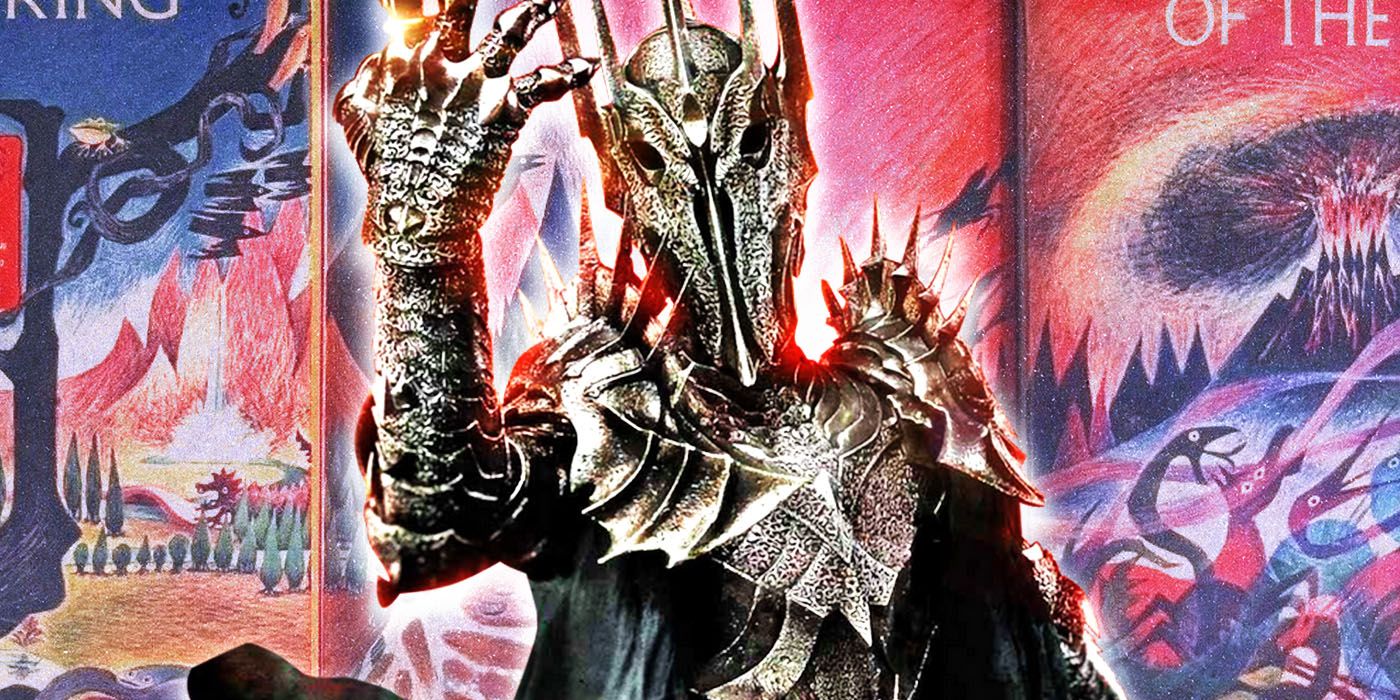
Unlike how most films portray the antagonist as an intimidating figure, Peter Jackson tried to induce the fear factor through a different method. Instead of relying on a physical form, the Lord of the Rings trilogy portrayed Sauron as a force of nature that’s everywhere. He is the evil that no one can escape, something vile that resides in the darkness of the shadows or one’s heart. Sauron’s presence in LOTR is terribly impactful, even without a typical physical form. The glory of Jackson’s villain’s depiction lies in the ambiguity and indefiniteness that sets Sauron’s representation from the books miles apart. While many argue about the key differences in Sauron’s character from the books, it’s the kind of change that’s done for the better and elevates the creative factor.
Sauron’s Physical Appearance Differs From the Books
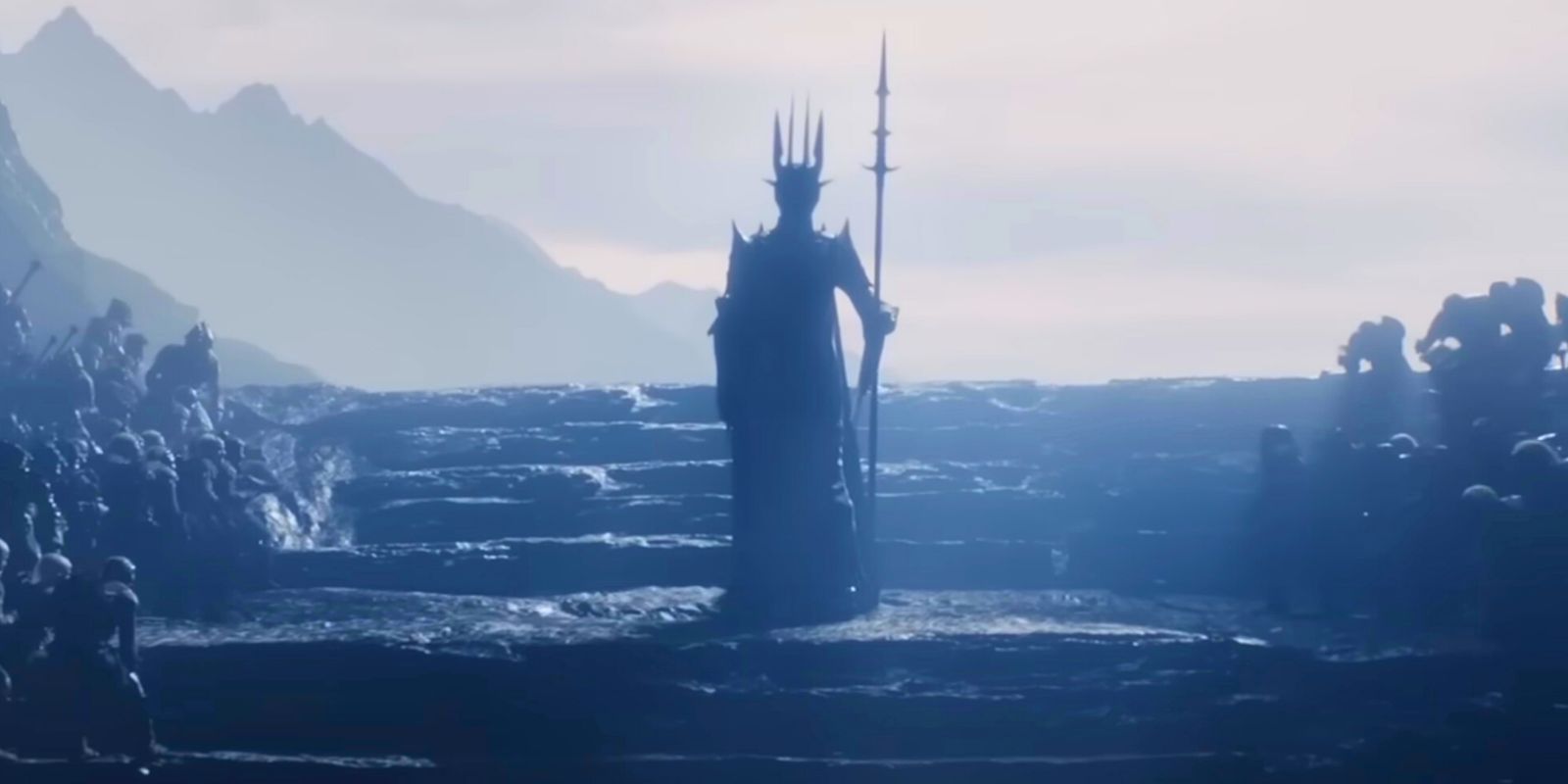
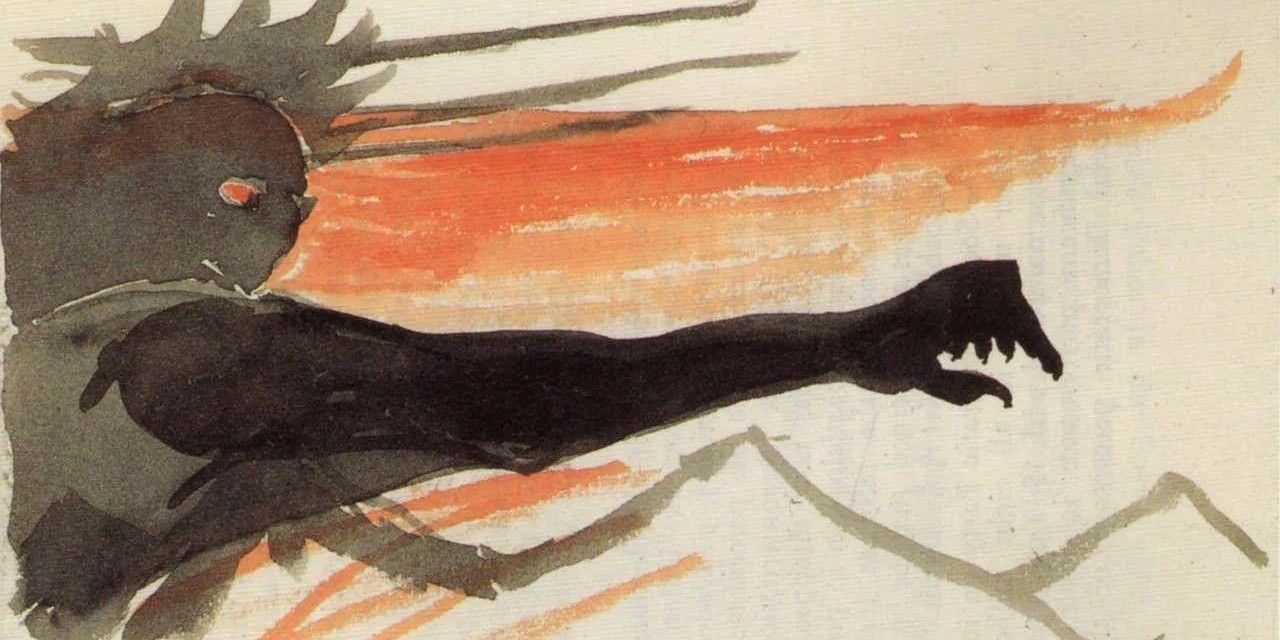
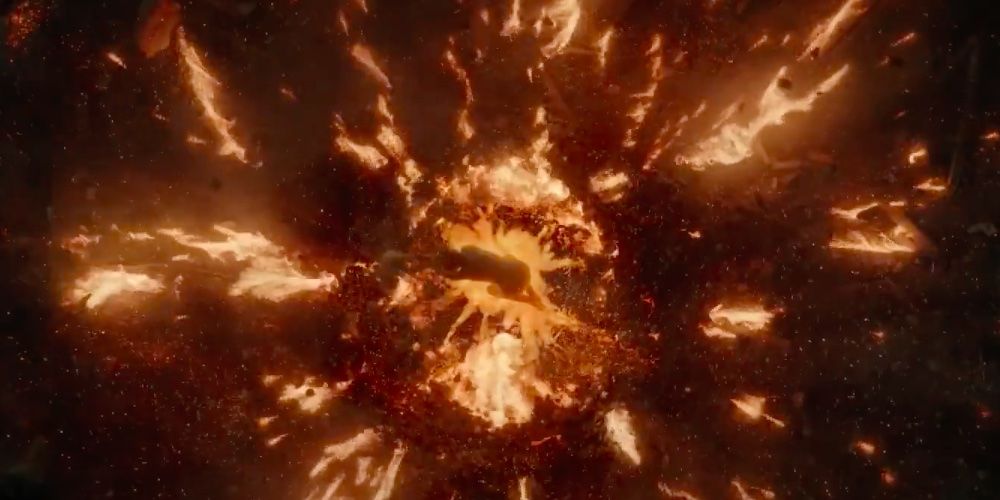
Sauron is never directly introduced in the trilogy.
The Dark Lord hasn’t been defined in great detail in the books.
He’s a vague figure but has a very different form in the movies.
Sauron was Morgoth’s successor as the second Dark Lord, who would go on to terrorize Elves, Dwarves, and Men. The viewers are introduced to the trilogy’s main antagonist not as a giant dark figure but as more of a power oozing from the pits of Mordor. In the prologue of The Fellowship of the Ring, it was revealed that Sauron was defeated at the hands of Isildur during the War of the Last Alliance. Isildur sliced Sauron’s finger, which held the One Ring, thus vanquishing his power and physical form. It was believed that Sauron was defeated after the war. However, with the One Ring still in existence, many thought that Sauron’s return was inevitable. It turned out that the separation from his ring only robbed him of his physical form, and Sauron returned to the fires of Mordor, lying dormant and collecting his strength for the time being.
Tolkien never mentions the Eye as Sauron’s physical embodiment; its symbolism is also very subtle. One of the first mentions of the fiery eye in the books is when Frodo experiences a piercing gaze in Galadriel’s mirror. There’s also a brief mention of the burning eye in Return of the King, described as an eye at the top of Barad-dur. Other than this, Tolkien has never mentioned the eye as something physical or “existing” that can be located or destroyed. As for Sauron’s appearance, there’s one account that confirms that the Dark Lord indeed had a physical body before it was destroyed.
In one conversation between Frodo and Gollum, the Hobbit described Sauron as having four fingers clad in a big, black, armored hand. In brief glimpses in the LOTR films, Sauron was also shown as someone with a giant stature in heavy black armor. Therefore, it’s safe to say that Sauron’s depiction in both the movies and the books isn’t so categorically different after all. The only real difference is that the movies lean more towards implying that the Eye of Sauron is the villain’s immediate and only physical manifestation.
Peter Jackson’s Famous “Eye of Sauron” Has a Completely Different Meaning
The Eye of Sauron is not the villain’s actual eye.
The flaming “Eye” is Jackson’s way of making Sauron’s presence felt.
The Evil Eye is more important in movies than in the books.
When Frodo is given the hefty responsibility of delivering the One Ring, the audience is introduced to Sauron again, but this time, he is shown as the fiery eye etched at the top of a dark tower in the depths of Mordor. The famous Eye of Sauron is the only “form” of the villain in the movies since the audience never gets to witness Sauron’s return in all his glory. The lidless Evil Eye is often confused with being Sauron’s actual eye. Tolkien’s books mentioned the “Eye” only a handful of times, but it is never referred to as Sauron’s physical eye. It is more of a symbol or a metaphor than anything else, and it’s Jackson’s creative decision to use the Eye’s symbolism in the movies that give it more meaning. This is one of the most significant changes to Sauron’s representation in the film compared to the books.
Since the viewers aren’t directly introduced to Sauron’s character in the trilogy, he is more or less only shown through flashbacks and the Eye. In Tolkien’s letters, Sauron is a looming evil, a presence, and a state of malevolence and power. The Eye merely reflects a single aspect of his character, which is an aura or a shadow that’s always gazing. It’s something that can pierce into one’s soul and corrupt it to a point of no return. The Evil Eye is a symbol of Sauron’s survival and growing influence, which is critical to the trilogy’s narrative and an impactful aspect of Frodo’s journey. The evil gaze is more important in the movies than in the books, making it the biggest difference that Jackson chose to have in his cinematic lore.
Sauron’s True Form is a Bit Complicated
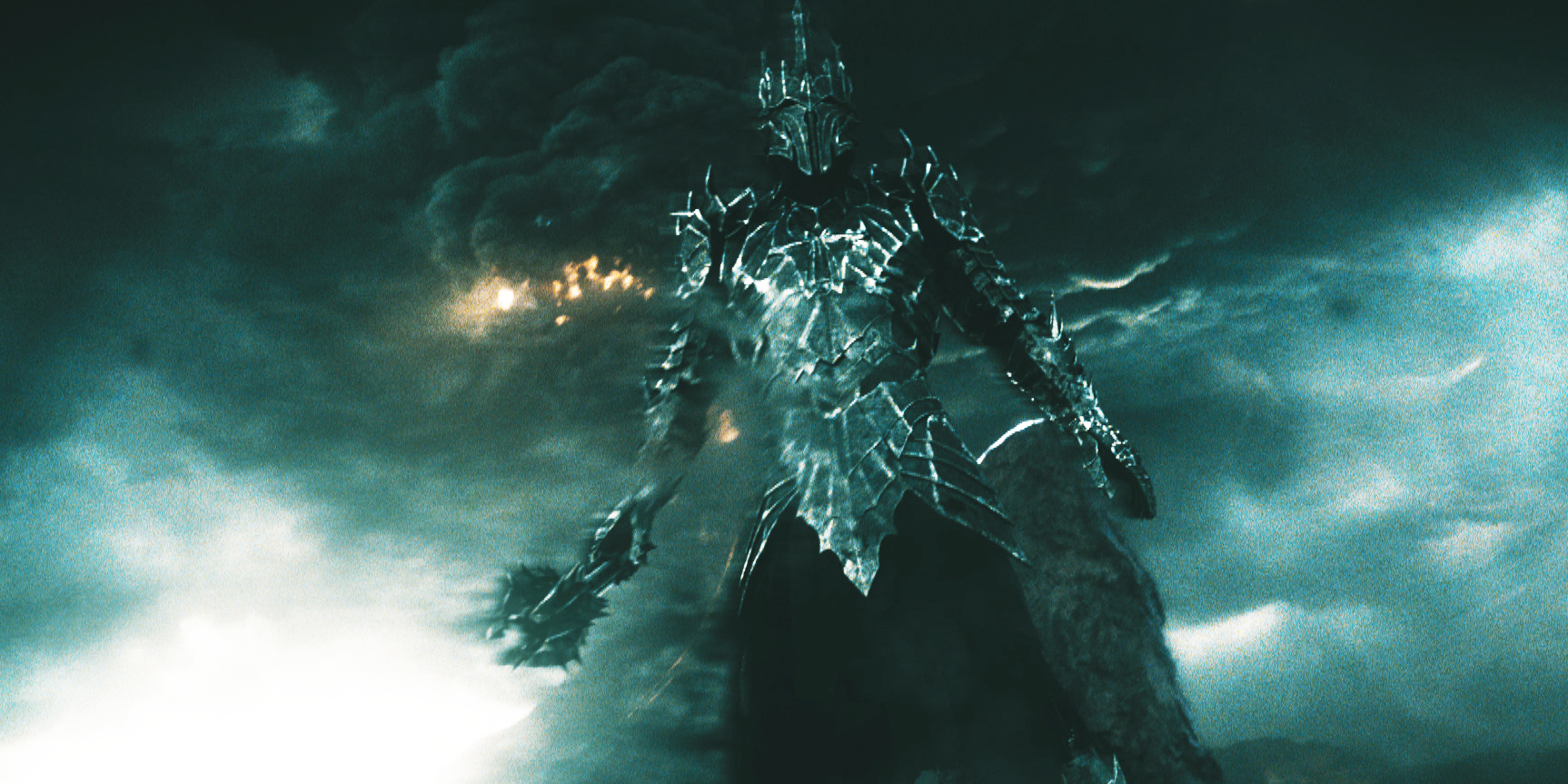
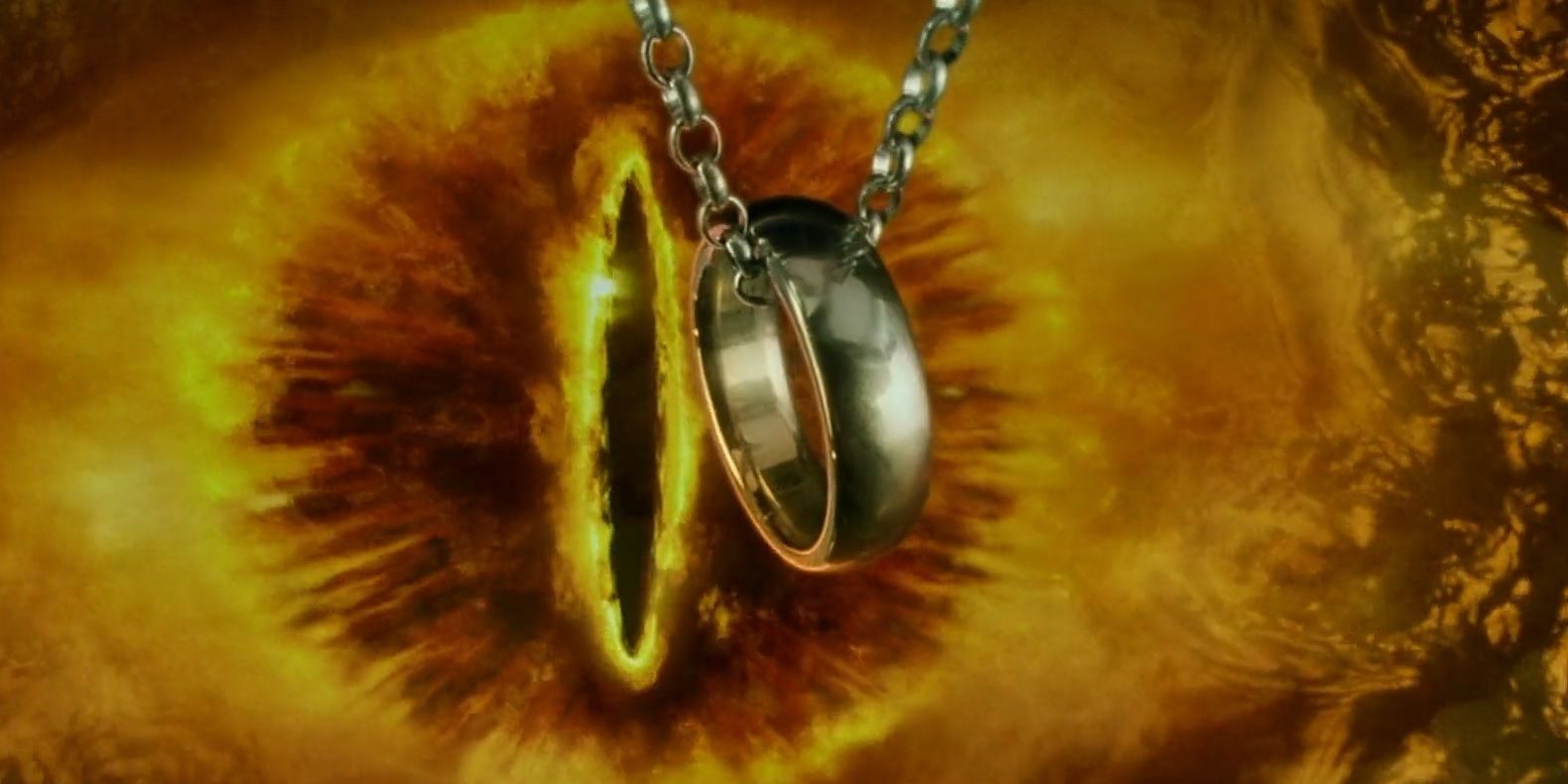
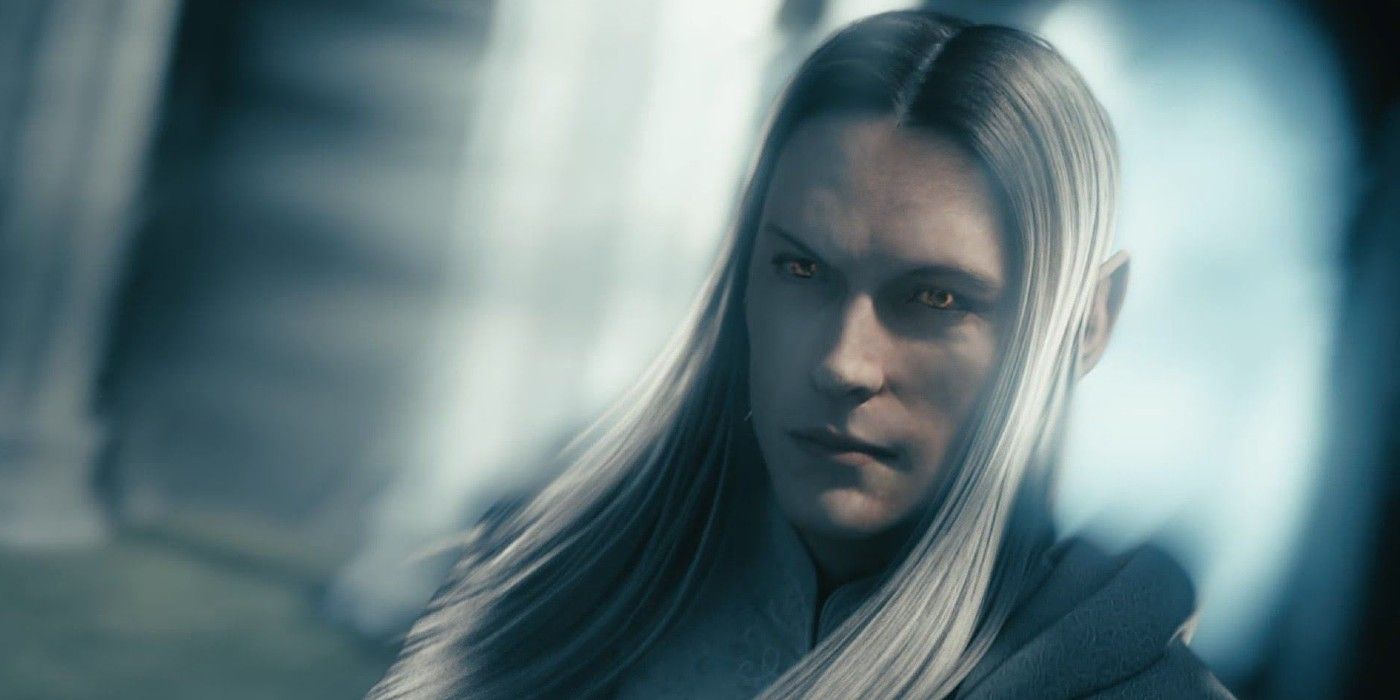
Sauron took many forms in the books.
Only The Rings of Power has physically shown the character.
Sauron is more of an evil aura or darkness in Tolkien’s than an actual person.
Nothing about Tolkien’s iconic work is simple. When it comes to Sauron, the legend is more complicated than anything. What he looks like, who he is, and how he survived are matters of understanding the meaning and enormity of the character. Tolkien has even compared his titular character to the devil himself as he’s described as a “Fallen Angel” with a body that radiates heat and is engulfed in a burning fire. It’s difficult for even seasoned Tolkien and LOTR fans to pinpoint a time or a description that can confirm Sauron’s true form. Since he was a shapeshifter, Sauron took many forms, and this is something that has more or less been confirmed in Amazon’s The Rings of Power.
According to the lore, Sauron’s original appearance was pure and that of an angel since he was one of the Maia. However, when he joined Morgoth and descended into evilness, he lost his fair form and let the darkness engulf his existence. After that, it’s stated that Sauron roamed Middle-earth as a giant man who reeked of evilness and radiated malice, but he also reigned terror with his other forms, like the werewolf and a vampire. However, Sauron’s most notable physical manifestation, the one that has also found an onscreen adaptation, was of Annatar or, in The Rings of Power, Halbrand. Annatar, or the Lord of Gifts, is defined in the time of The Silmarillion as a “fair” form. The Numenoreans saw him as a towering man bigger than any of their kind with an attractive yet fearsome aura and twinkling eyes that sent chills down the people’s spines.
Sauron Could Finally Have a Face
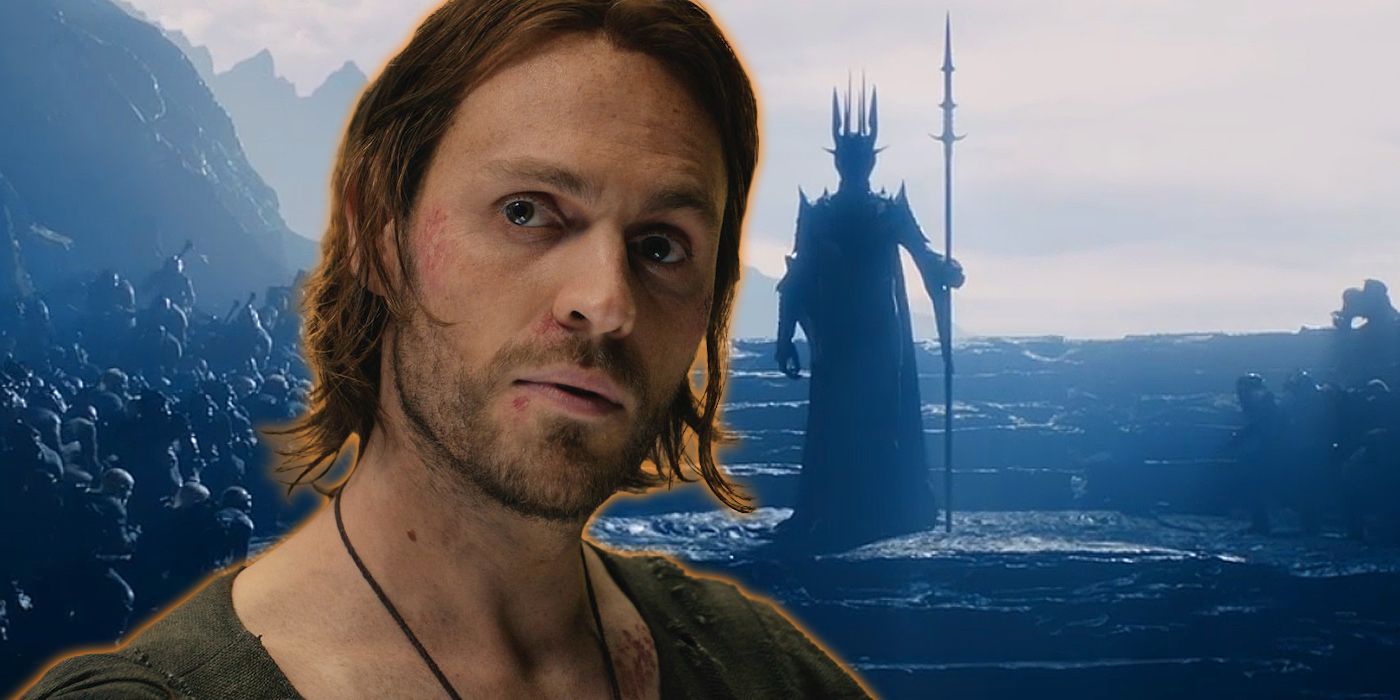
The Rings of Power can change the way Sauron’s character is perceived.
It’s difficult to say how the TV series will handle Sauron’s enigma.
Jackson’s portrayal of Sauron still remains iconic.
Peter Jackon’s trilogy was never about glorifying a certain character; rather, it was always about retelling one of the greatest pieces of fantasy. Jackson could’ve taken creative liberty and shown Sauron as the biggest villain of cinema who had an infinitely greater fear level than the rest. However, the LOTR Trilogy did justice to the ambiguity surrounding Sauron’s appearance, just like in the books. Although Sauron doesn’t differ too much from what Tolkien might have imagined him to be, the portrayal in both forms has their respective impact and effectiveness. As for the modern interpretation of the famed character, The Rings of Power might be the first work in the franchise to finally give Sauron a face.
Despite not being entirely accurate, Halbrand’s epic reveal at the end of The Rings of Power offered the viewers the first experience of seeing Sauron as a full-fledged character. According to the books, Sauron once took the disguise of a very attractive figure and infiltrated Numenor, along with befriending Celebrimbor, to forge the Rings of Power. The series’ final shot shows Halbrand walking towards the fires of Mordor, confirming that he has been the Dark Lord all along. Although both Tolkien’s and Jackson’s descriptions and presentation of Sauron are vague, The Rings of Power could be the first to play the character in its full physical might. It would be a treat to watch how Sauron ascended the peak of his powers and terrorized the land for thousands of years.




